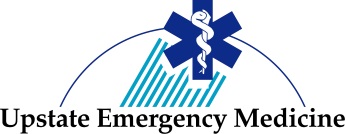TTHM 5.1 (10/22/14) Ob/Gyn Day ~ Tint. 99-109
10a 1st Trimester Bleeding (Ciaccio)
First 13 weeks… DDx, heresies, physician role?
Common, Dangerous, *Must R/O & *Curveballs…
Know the language of the specialty: Abortion/miscarriage (spontaneous v induced), Implantation, Ectopic, Cervical, Vaginal, Uterine, Rectal…
“threatened” (closed cervix & fetal cardiac activity, 90% do not abort),
“inevitable” (cervix open c tissue in cervix, bleeding & cramps…)
“complete” (nothing in uterus, bleeding & cramps have stopped?)
“incomplete” (late 1st to early 2nd trimester c some retained product, bld, cramps…)
“missed” (dissolved/disappeared fetus & products)
RISKS: Tobacco/Nicotine, Cocaine vs ?EtOH & no evidence for caffeine…
Medical termination has ~16% failure/retention, v. surgical evacuation ~3% failure/retention
Trauma, Ectropium (squamocolumnar cervical protrusion), Ectopic, Septic Abortion
Molar Pregnancy (partial/complete), Hydatidiform moles… Choriocarcinoma,
Complete Molar ~ “cluster of grapes”; Partial ~ single mass…
Gestational Trophoblastic disease… often discovered 2nd to 3rd Trim… NOW 1st Trim Dx.
Tumors of Gestational tissue c multiple genetic abnormalities (NEJM 2009 article)
*Be calm, honest, nonevasive, unemotional other than empathy.
13% of 1st trimester bleeding cases undergo miscarriage.
CASE: 8wks GA, VSS, viable IUP. PELVIC exam UNNECESSARY in pregnancy c normal US! because there is no change in Ob/Gyn management based on pelvic?
May be necessary for GC/Chlamydia screen, but needs comparison to urine screen…
http://www.cdc.gov/std/treatment/2010/qanda/screening.htm
1030a 3rd Trimester Bleeding (Joslin)
Take it seriously, consider blood & surgery.
Why bleeding?
*Umbilical cord, vasa previa,
*Abruption (Placental locations: previa often resolves spontaneously, “bright red bleeding”)
Cocaine use often associated, painful contractions, blood may be contained!!! …but US not the most sensitive test for bleed!
No manual exam? Speculum exam thought safer? TVUS always thought safe?
*Ruptured Uterus (rare, sp Csection)
check Rh status c Type & Screen. Rhogam if RhNeg if concern fro bleed…
https://uemcurrentawareness.files.wordpress.com/2014/10/9d0cc-cat_pringles.jpg
11a SG (Heyboer, Weidman)
17F Sz got 5mg Versed for TonicClonic, BP 160/110, Eclampsia & HELLP case.
Drug Classes Review Jeopardy…
1230p JrSr (Weidman, Johnson)
RLQ Cases. One presentation, many outcomes… Appy, Ectopic, Chole, TOA, IUP, PID…
130p Ectopic Pregnancy (Knutsen)
CASE: Vaginal bleeding & shoulder pain in 34F. LMP 3 wks ago, G0P0 no contraception…
No overexertion, odd achy R shoulder (Kehr sign) & VG bld… no PMHx. Pleasant pt… so expecting badness. RUQ worse, Pelvic exam c mild blood, not bad otherwise.
RUQ & TV US, pending HCG… US result!!! ~”fluid in Morrisons pouch” (CHECK FAST!!!)
Ruptured v nonruptured… 2% of all pregnancies?! Heterotopic pregnancies ~1/10,000 up to 1/300 in assisted reproduction.
1st trimester bleeding is classic, but not all have bleeding!
Age >30 has increased risk! 20% have wnl initial US!
Child bearing age, abd pain, esp c shock is ECTOPIC until proven otherwise.
Call Gyn ASAP, while labs still pending!
Methotrexate only for QuantHCG <5000.
If ruptured or too large, may need Ob/Gyn SG!!!
Kehr Sign <http://en.m.wikipedia.org/wiki/Kehr’s_sign>
2p(1030) PIH, HELLP (Rodriguez, Ebola Czar fyi)
20wks arguably cutoff for viability (TF for fetal monitoring) & time when “bad dsxs” happen
140/90 threshold BP for preeclampsia (mild…)
160/110 SEVERE HTN in pregnancy ~early preeclampsia?
HTN common in pregnancy, #3 cause of maternal deaths related to pregnancy.
Low BP common in pregnancy also (baseline).
Chronic HTN, Gestational HTN, Primary Preeclampsia, Preeclampsia on Chronic HTN
90% of Preeclampsia have chronic HTN?!
HTN Eval: EKG, CBC, CMP, UA, LDH?, US, fundoscopy…
Methyldopa is best oral antiHTN in pregnancy, Labetalol ok; Hydralazine is #1 IV, labetalol/esmolol ok…
ACEi bad for baby.
Gestational HTN onset >20wks! (mild or severe)
**Preeclampsia look for Proteinuria (24hr urine or 1plus on UA, & BP > 140/90).
…so ED testing may have false positive… need OB consult!
Preeclampsia up to 4wks postpartum; thought to be inflammatory process, can progress to Eclampsia, Liver Failure, Sz, CVA, DIC!
Single UA cannot fully exclude preeclampsia?! (only ~35% sensitive) …so ADM/TF to Crouse.
4g/15min Mag & start Mag drip (only lasts ~1hr!)
Delivery is definitive Tx. <http://www.acog.org/Womens-Health/Preeclampsia>
Chronic HTN & Preeclampsia, for ED purposes, IS PREECLAMPSIA.
**Eclampsia is Preeclampsia plus SEIZURE! …or even without previous preeclampsia.
…start even more Mag! (6g IV & double drip to 2g/hr). Hold off initially on Benzos bc bad for baby. Monitor Respiration dt possible suppression… NEED EMERGENT DELIVERY! evidence of eclampsia increases M&M!
Need Foley for urine monitoring, avoid excessive IVF otherwise.
**HELLP: Hemolysis c schistocytes, Elevated LFTs, Low Plts <100K…
May need Plt TF for <20K; <40K when Csection planned.
Have low threshold for Ob consult!
…& on Ebola:
- http://www.acep.org/ebola/
- http://www.acep.org/uploadedFiles/ACEP/practiceResources/issuesByCategory/publichealth/Ebola%20Hemorrhagic%20Fever.pdf
- http://www.acep.org/uploadedFiles/ACEP/practiceResources/issuesByCategory/publichealth/Survey-and-Cert-Letter-15-02.pdf
Also, for your self-education: FRONTLINE SPECIAL:
- http://www.pbs.org/wgbh/pages/frontline/ebola-outbreak/
- http://www.pbs.org/wgbh/pages/frontline/health-science-technology/ebola-outbreak/watch-ebola-outbreak-with-the-filmmaker/
[David notes: Fixed Frontline links. Previous link just went to Frontline front page]
230p Complications of Delivery (Nicholas)
Cases of Pregnant Ladies without Ob access… (Community Setting, i.e.)
CASE1: 28F @38wks, P1G0 preg wnl, PMHx all good…
do the exam & send to Ob!
…if prolapsed cord, elevate presenting part! & Trendelenburg.
CASE2: 23F G2P1 @41wks, baby is coming now!
Examine her. Crowning… prepare for delivery! Tocometry if possible… or doppler FHR 110 to 160. L lateral decubitus position & supplement maternal O2 & IVF prn… ED dystocia?! McRoberts (superhyperflexed) & Reubens (direct pressure over pubic area)… Emptying bladder can help… Epesiotomy?!
CASE3: 32F @28wks, fully dilated… bottom instead of head! DO NOT PULL, at least initially (allow to dilate fully bc head is largest part…)
Call Ob & wait…
3p Postpartum Complications (Nicholas)
CASE1: 34F 6 days postpartum, SOB worse c exertion, & b/L LE edema… ddimer markedly elevated. CTA shows?… Can baby nurse? not yet… pump & dump for 24hrs!
Give formula for 24hrs.
Postpartum period (6 months) at 5x risk for PE & 20x DVT!!! & can go to upper femoral & iliac veins!!! VTE can be thrombolysed in pregnancy dt maternal health priority!
Inverted Uterus would need urgent reduction…
PostPartum Hemorrhage should stop <7min or suspect coagulopathy.
FFP may be needed dt coagulopathy of pregnancy (fibrinogen deficiency)
CASE2: 21F G3P3 3 days postpartum, continued bleeding… get US to look for retained products… & get Ob consult. Pt would need D&C for retained products.
CASE3: G1P1 4 days sp Csection c Fvr of 101*C… broad spectrum Abx, including anaerobes.
CASE4: Postpartum CardioMyopathy (v. PP Depression) ~ fatigue, “can’t take care of my baby”… Myocarditis in up to 30%! also associated c PE! & may need heparin…
EMTALA says TF of Pregnant lady is Risk Dependent & KNOW HOSP SPECIFIC RULES!!!
Community Hospitals may have GEN SURG, & pt can stay if EMERGENT CONDITION (imminent).
Crash Csection?! is very rare & only if last resort…

